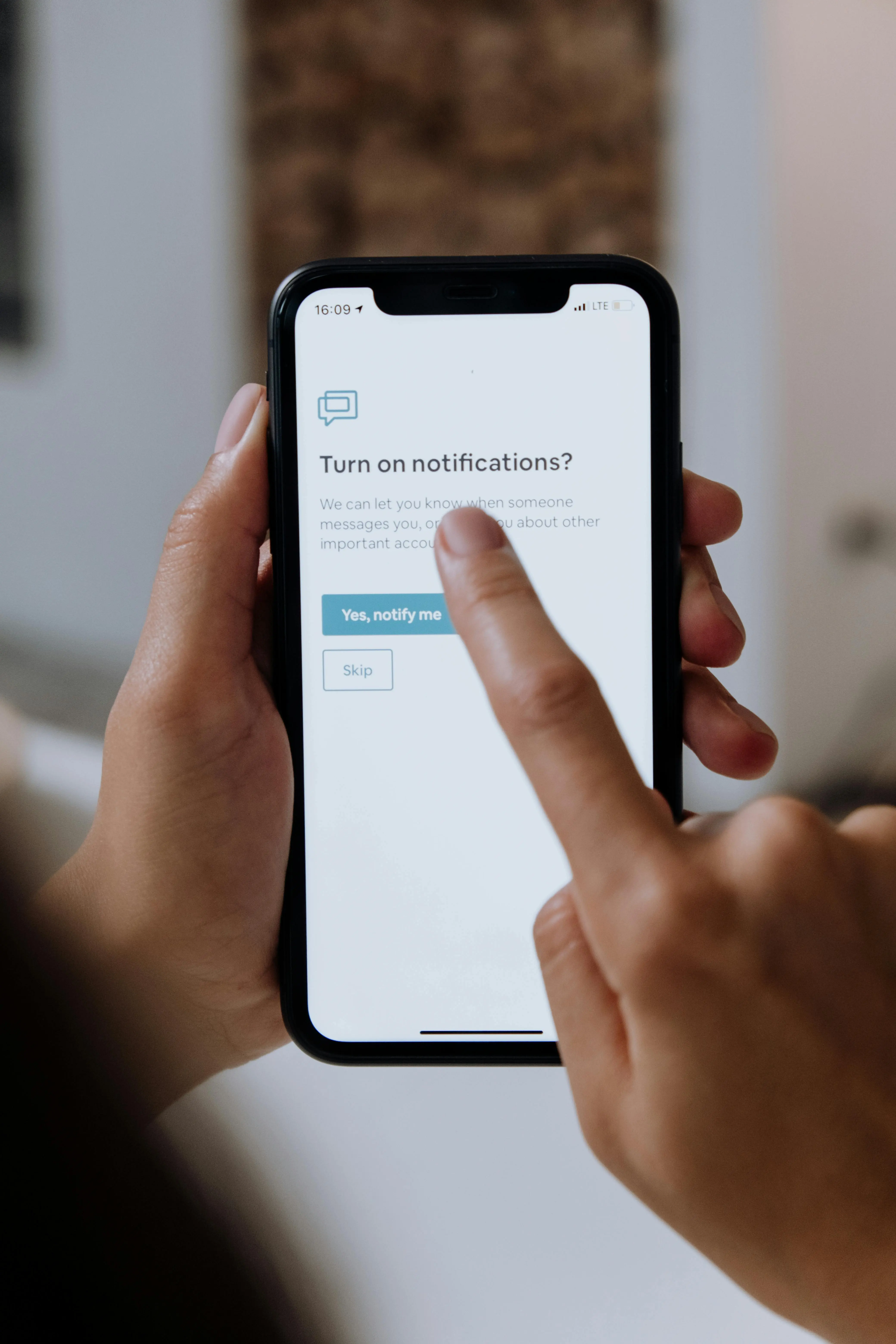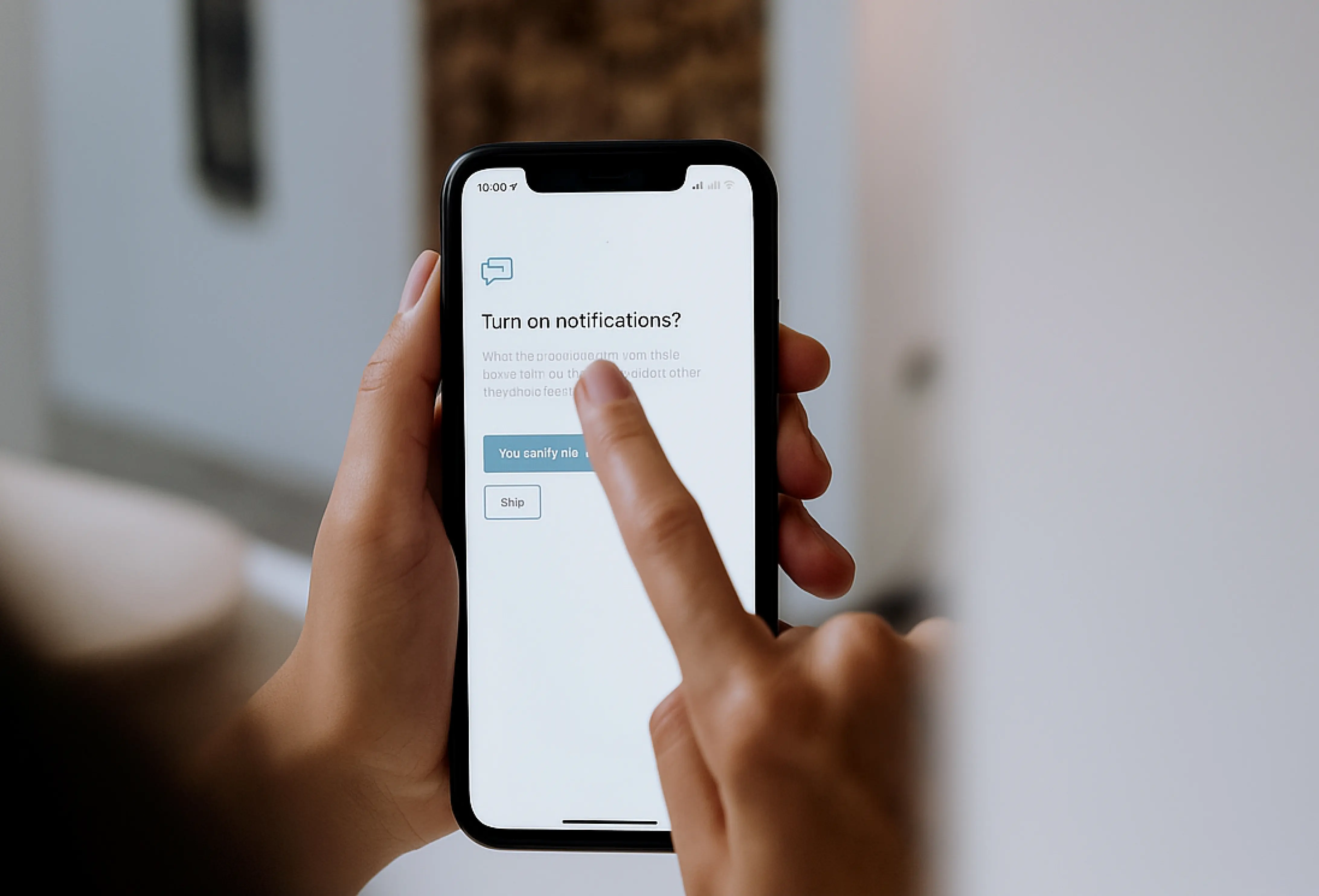Push Notifications
for Mobile Banking app
Enhancing UX with a clear and scalable communication system.
[Preview only – full case available
on desktop 💻]
Project overview
As part of the design and consulting team, I contributed to defining and designing the push notification system for a mobile banking app.
The goal was to enable the bank to manage notifications in a clear and scalable way, ensuring personalization, security, and multi-device control.
Although the project had a limited scope, it was strategically significant because it required balancing business, privacy, and user experience needs in a daily-use and highly sensitive context (money management).
About the project
Role:
UX Designer
Time:
Oct 2020 – Mar 2021
Team:
2 UX Designers, 3 Business Analysts, Dev Team
Cient:
Leading Italian Financial Institution (NDA)
Key challenges
→
Accurately identifying the user in a complex ecosystem (multi-device, multiple logins, shared accounts).
→
Maintaining cross-platform consistency (iOS and Android), aligning notification activation and management flows.
→
Managing diverse use cases (generic, sensitive, reporting, multichannel notifications).
→
Balancing security and simplicity: protecting personal data without creating friction for the user.
→
Collaborating with multidisciplinary teams (analysts, developers, bank stakeholders).
The Process
Analysis & Research
Definition & Strategy
Design
Validation & Delivery
PHASE 1
Analysis & Research
This phase focuses on understanding the problem space. It involves gathering business requirements, analyzing user needs, and mapping the current state to uncover opportunities and constraints.
The outcome is a clear foundation for design decisions.
Business requirements
We started with an in-depth requirements analysis, aligning the bank’s needs with user expectations.
→ Identification of different notification types (alerts, monitoring, reports, commercial communications)
→ Definition of business rules to manage sensitive vs. non-sensitive notifications
→ Exploration of system scalability: from single-device usage to multi-user, shared-device scenarios
Nomenclature and user states
Mapping user states (notifications enabled/disabled, registered, logged in, unregistered) was critical for designing flows.
I created a simplified visual model of the nomenclature, making state transitions clear to developers and stakeholders.
This work translated technical concepts into a readable UX model, reducing errors and ensuring cross-platform consistency.
[Preview limited on mobile – see full case on larger screen]
Customer journey mapping
We developed detailed customer journeys for real-life scenarios:
→ first app access,
→ multi-device management,
→ shared devices (e.g., family tablet),
→ rejecting push notification activation,
→ social use cases (dinners, peer-to-peer payments).
These journeys helped anticipate complex cases and define the rules for activation, deactivation, and fallback notifications.
[Preview limited on mobile – see full case on larger screen]
PHASE 2
Definition & Strategy
Here the insights are translated into structure.
The team defines priorities, creates frameworks such as taxonomies or matrices, and aligns stakeholders on objectives and rules. This phase ensures a shared direction before moving into design.
Notification matrix
I contributed to defining a clear notification taxonomy by crossing type (alert, monitoring, report) with sensitivity (sensitive/non-sensitive).The outcome was a visual matrix of six key clusters, which guided both journey design and channel definition (push, in-app, email, SMS).This matrix became a valuable synthesis tool for both design and business stakeholders.
Type
Sensitivity
Example
Alert
Sensitive
Transaction alerts
Monitoring
Sensitive
Low balance alert
Report
Sensitive
Account activity report
Alert
Non sensitive
Account block reminder
Monitoring
Non sensitive
Stock price alert
Report
Non sensitive
Current account balances
Definition of main flows
I worked on outlining the core user flows that would structure the notification system, ensuring that every state and transition was clearly defined. This included activation and deactivation paths, login/logout scenarios, and the management of user preferences.
These flows provided a blueprint that supported both design consistency and technical feasibility across platforms.
Stakeholder and dev team alignment
A crucial part of this phase was maintaining alignment between business, design, and development teams. I facilitated discussions to translate business rules into user-centered flows, ensuring that stakeholders understood design implications and that developers had the clarity needed to implement the logic.
This step minimized risks of misinterpretation and created a shared vision across disciplines.
PHASE 3
Design
In this phase, ideas take shape through flows, wireframes, and prototypes. The focus is on creating user-centered solutions that are consistent across platforms and adaptable to different scenarios, always keeping feasibility in mind.
iOS and Android flow design
I designed the flows for:
→ notification activation and management (opt-in, username saving, permissions)
→ mapping user states (registered, unregistered, logged in, logged out)
→ multichannel management (push, in-app, email, SMS, PEC)
[Preview limited on mobile – see full case on larger screen]
[Flows are shown here at reduced quality to illustrate the working method. Full-resolution versions will be available during portfolio presentations]
Multidevice scenarios
I designed scenarios for managing multiple devices linked to the same account:
→ Family tablet: two users sharing a device, with potential risks of receiving private notifications
→ Multi-device user: consistent notification management across smartphone, tablet, and laptop with different states
The visual representation of these scenarios made complexity tangible and enabled the design of clear, secure solutions.
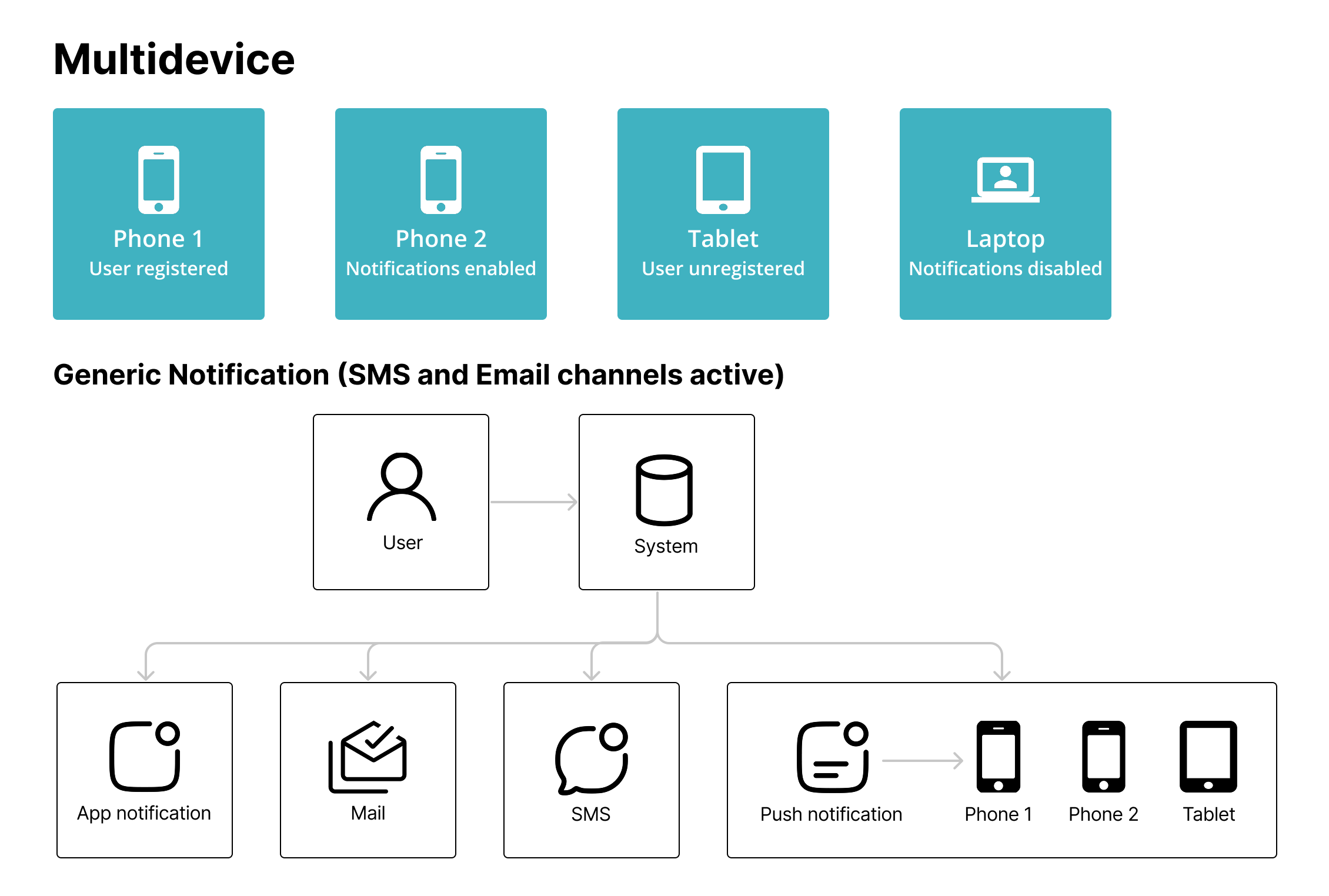
High-fidelity prototyping
For this project, we moved directly to high-fidelity prototyping since the client already had a consolidated design system.I designed cross-platform prototypes for iOS and Android, which helped to:
→ ensure visual and behavioral consistency across OSs,
→ support validation with stakeholders and development teams,
→ clearly represent notification management flows and user preferences,
[Preview limited on mobile – see full case on larger screen]
PHASE 4
Validation & Delivery
The final phase ensures the design is validated and ready for implementation. It includes reviewing with stakeholders, iterating on feedback, and delivering clear assets and documentation to development teams
Alignment with the development team
In agreement with the client, we worked on Overflow to deliver complete user flows instead of isolated screens. This approach provided context and clarity for developers and simplified implementation. Since Overflow is also a collaboration tool, it enabled cross-team iteration: development, marketing, and business stakeholders could leave comments directly on the flows.
This allowed us to adapt quickly to feedback, review steps when necessary, and ensure that the entire system was mapped end-to-end, not just visualized screen by screen.
[Preview limited on mobile – see full case on larger screen]
Conclusion
Although this project had a narrow scope, it gave me the opportunity to deepen my skills in UX flow design for iOS and Android systems. Working directly on end-to-end notification flows — rather than on individual screens — helped me understand how to design with both user experience and technical implementation in mind.
I also gained valuable insight into the logic and constraints of the banking sector, learning how sensitive contexts like finance demand a balance of usability, security, and compliance.
The final steps of the project were particularly important: refining flows and prototypes based on stakeholder feedback, validating cross-platform consistency, and confirming that business requirements were met. This closed the loop and consolidated all design decisions into a cohesive, ready-to-implement solution.
Overall, the project strengthened my confidence as a UX designer and gave me concrete experience in designing complex system flows within a structured, multidisciplinary environment.
MORE PROJECTS
Enterprise Solutions / B2B Platform / Complex Workflows
Corporate Intranet
Platform
Transforming a legacy internal tool into a scalable, task-oriented intranet for customer service operators.
View Case Study
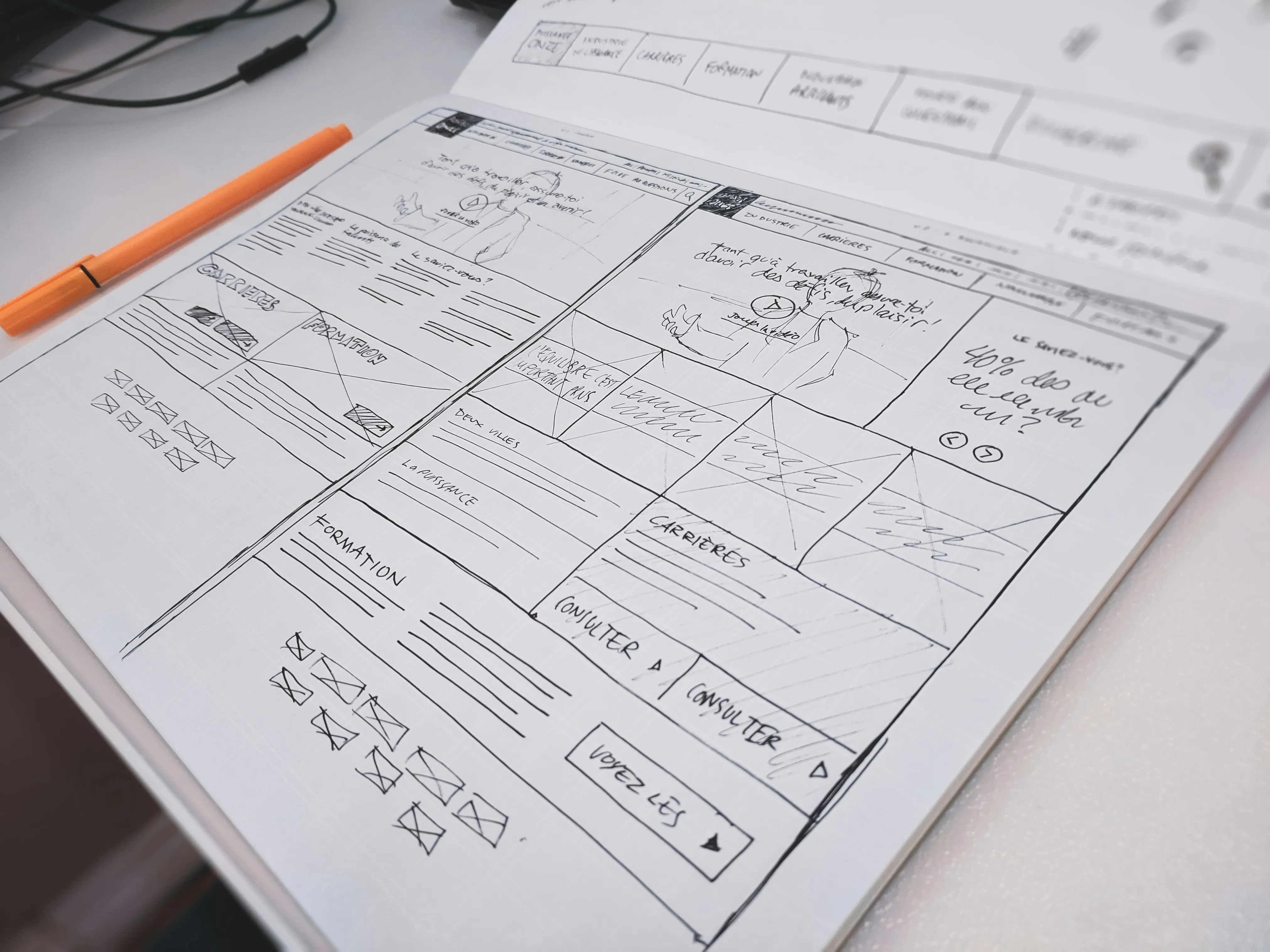
SaaS SOLUTIONS / FROM COMPLEXITY TO CLARITY / SEAMLESS USER JOURNEYS
Whitelable E-commerce Ecosystem
End-to-end UX design of a custom enterprise platform — from business needs to tested product.
View Case Study
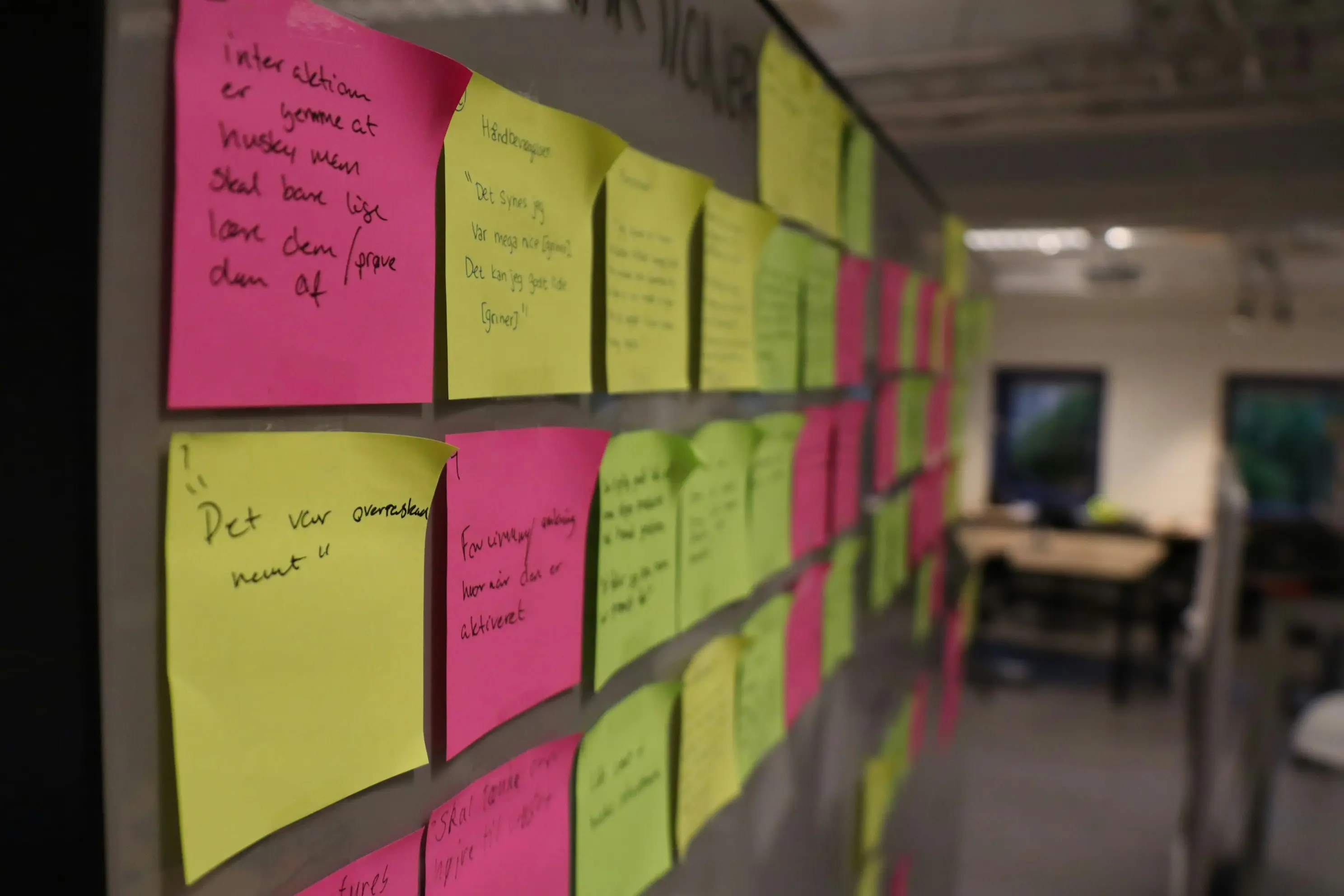
FINTECH / MOBILE APP / UX FLOWS
Push Notifications
for Mobile Banking app
Enhancing UX with a clear and scalable
communication system.
Project overview
As part of the design and consulting team, I contributed to defining and designing the push notification system for a mobile banking app.
The goal was to enable the bank to manage notifications in a clear and scalable way, ensuring personalization, security, and multi-device control.
Although the project had a limited scope, it was strategically significant because it required balancing business, privacy, and user experience needs in a daily-use and highly sensitive context (money management).
About the project
Role:
UX Designer
Time:
Oct 2020 – Mar 2021
Team:
2 UX Designers, 3 Business Analysts, Dev Team
Cient:
Leading Italian Financial Institution (NDA)
Key challenges
→
Accurately identifying the user in a complex ecosystem (multi-device, multiple logins, shared accounts).
→
Maintaining cross-platform consistency (iOS and Android), aligning notification activation and management flows.
→
Managing diverse use cases (generic, sensitive, reporting, multichannel notifications).
→
Balancing security and simplicity: protecting personal data without creating friction for the user.
→
Collaborating with multidisciplinary teams (analysts, developers, bank stakeholders).
The Process
Analysis & Research
Definition & Strategy
Design
Validation & Delivery
PHASE 1
Analysis & Research
This phase focuses on understanding the problem space. It involves gathering business requirements, analyzing user needs, and mapping the current state to uncover opportunities and constraints.
The outcome is a clear foundation for design decisions.
Business requirements
We started with an in-depth requirements analysis, aligning the bank’s needs with user expectations.
→ Identification of different notification types (alerts, monitoring, reports, commercial communications)
→ Definition of business rules to manage sensitive vs. non-sensitive notifications
→ Exploration of system scalability: from single-device usage to multi-user, shared-device scenarios
Nomenclature and user states
Mapping user states (notifications enabled/disabled, registered, logged in, unregistered) was critical for designing flows.
I created a simplified visual model of the nomenclature, making state transitions clear to developers and stakeholders.
This work translated technical concepts into a readable UX model, reducing errors and ensuring cross-platform consistency.
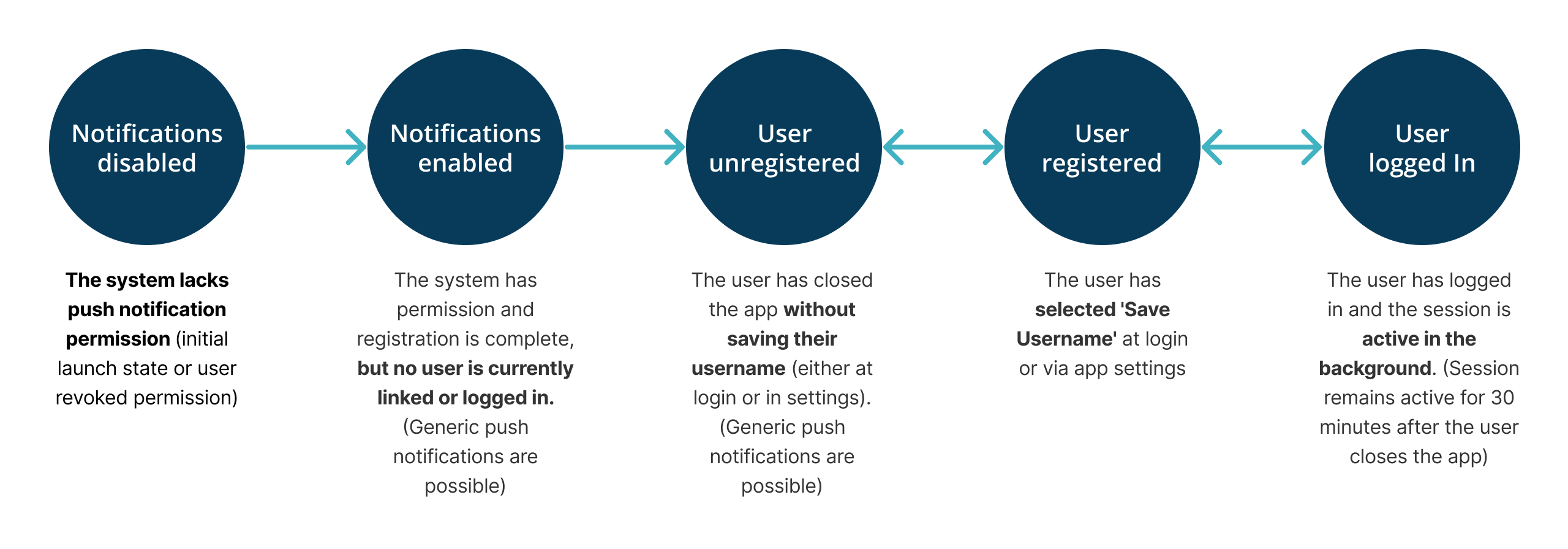
Customer journey mapping
We developed detailed customer journeys for real-life scenarios:
→ first app access,
→ multi-device management,
→ shared devices (e.g., family tablet),
→ rejecting push notification activation,
→ social use cases (dinners, peer-to-peer payments).
These journeys helped anticipate complex cases and define the rules for activation, deactivation, and fallback notifications.
[Preview limited on mobile – see full case on larger screen]
PHASE 2
Definition & Strategy
Here the insights are translated into structure.
The team defines priorities, creates frameworks such as taxonomies or matrices, and aligns stakeholders on objectives and rules. This phase ensures a shared direction before moving into design.
Notification matrix
I contributed to defining a clear notification taxonomy by crossing type (alert, monitoring, report) with sensitivity (sensitive/non-sensitive).The outcome was a visual matrix of six key clusters, which guided both journey design and channel definition (push, in-app, email, SMS).This matrix became a valuable synthesis tool for both design and business stakeholders.
Type
Sensitivity
Example
Alert
Sensitive
Transaction alerts
Monitoring
Sensitive
Low balance alert
Report
Sensitive
Account activity report
Alert
Non sensitive
Account block reminder
Monitoring
Non sensitive
Stock price alert
Report
Non sensitive
Current account balances
Definition of main flows
I worked on outlining the core user flows that would structure the notification system, ensuring that every state and transition was clearly defined. This included activation and deactivation paths, login/logout scenarios, and the management of user preferences.
These flows provided a blueprint that supported both design consistency and technical feasibility across platforms.
Stakeholder and dev team alignment
A crucial part of this phase was maintaining alignment between business, design, and development teams. I facilitated discussions to translate business rules into user-centered flows, ensuring that stakeholders understood design implications and that developers had the clarity needed to implement the logic.
This step minimized risks of misinterpretation and created a shared vision across disciplines.
PHASE 3
Design
In this phase, ideas take shape through flows, wireframes, and prototypes. The focus is on creating user-centered solutions that are consistent across platforms and adaptable to different scenarios, always keeping feasibility in mind.
iOS and Android flow design
I designed the flows for:
→ notification activation and management (opt-in, username saving, permissions)
→ mapping user states (registered, unregistered, logged in, logged out)
→ multichannel management (push, in-app, email, SMS, PEC)
[Preview limited on mobile – see full case on larger screen]
[Flows are shown here at reduced quality to illustrate the working method. Full-resolution versions will be available during portfolio presentations]
Multidevice scenarios
I designed scenarios for managing multiple devices linked to the same account:
→ Family tablet: two users sharing a device, with potential risks of receiving private notifications
→ Multi-device user: consistent notification management across smartphone, tablet, and laptop with different states
The visual representation of these scenarios made complexity tangible and enabled the design of clear, secure solutions.

High-fidelity prototyping
For this project, we moved directly to high-fidelity prototyping since the client already had a consolidated design system.I designed cross-platform prototypes for iOS and Android, which helped to:
→ ensure visual and behavioral consistency across OSs,
→ support validation with stakeholders and development teams,
→ clearly represent notification management flows and user preferences,






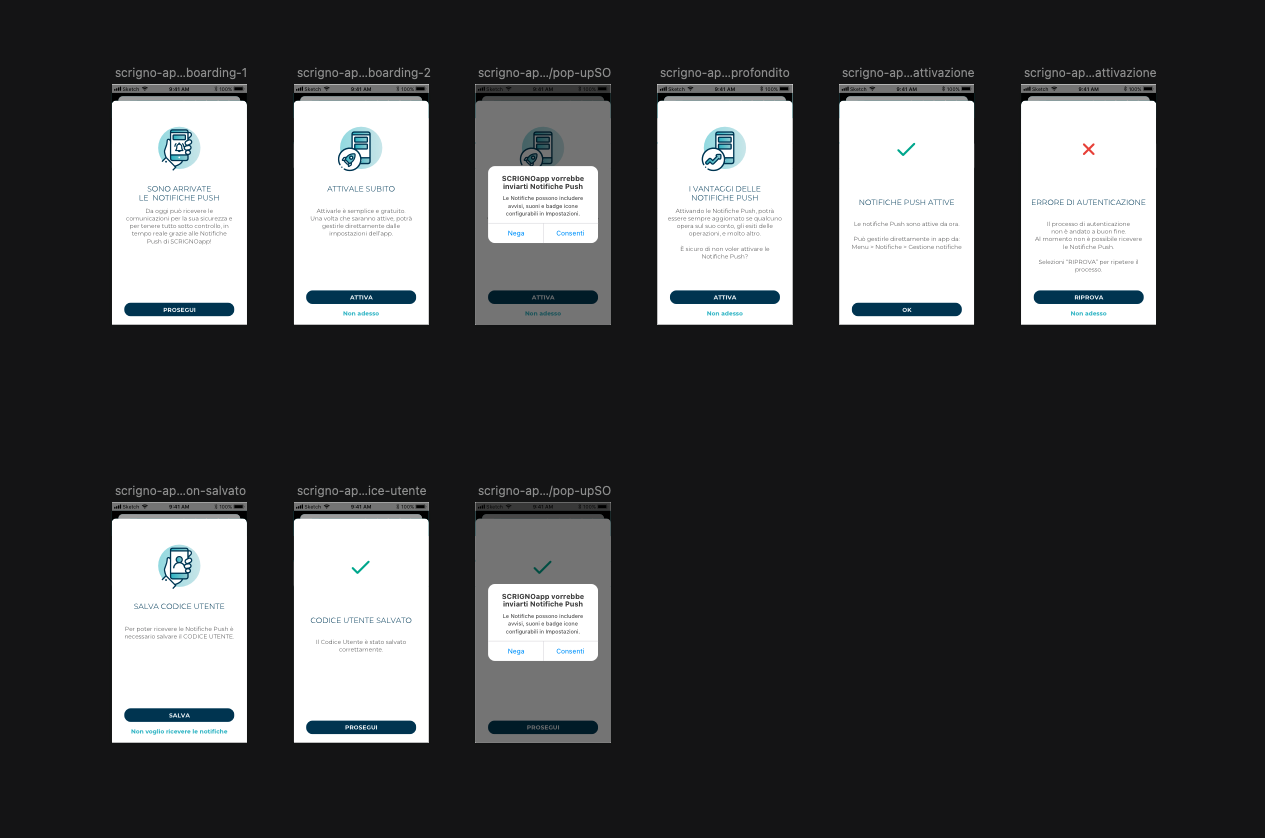








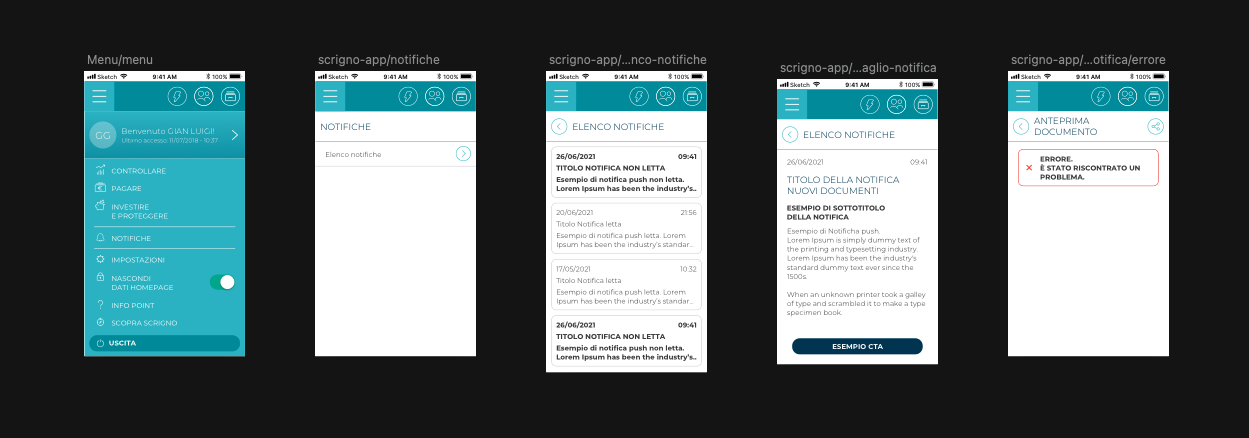




PHASE 4
Validation & Delivery
The final phase ensures the design is validated and ready for implementation. It includes reviewing with stakeholders, iterating on feedback, and delivering clear assets and documentation to development teams
Alignment with the development team
In agreement with the client, we worked on Overflow to deliver complete user flows instead of isolated screens. This approach provided context and clarity for developers and simplified implementation. Since Overflow is also a collaboration tool, it enabled cross-team iteration: development, marketing, and business stakeholders could leave comments directly on the flows.
This allowed us to adapt quickly to feedback, review steps when necessary, and ensure that the entire system was mapped end-to-end, not just visualized screen by screen.
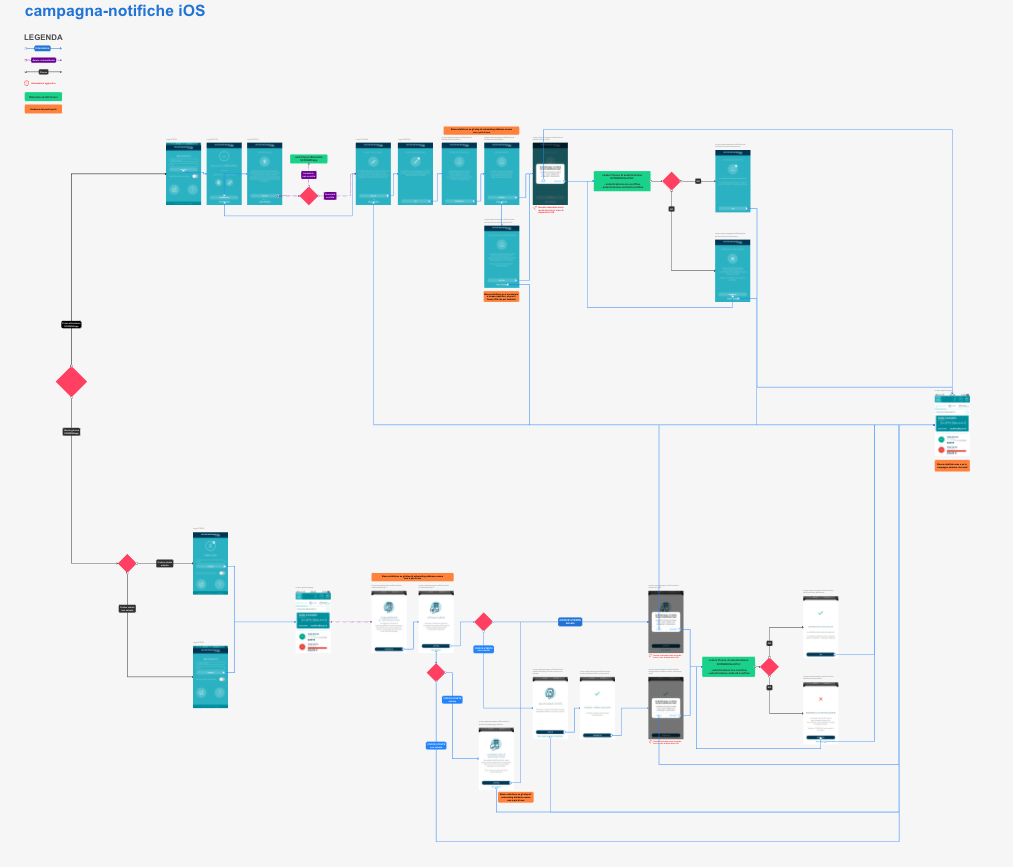
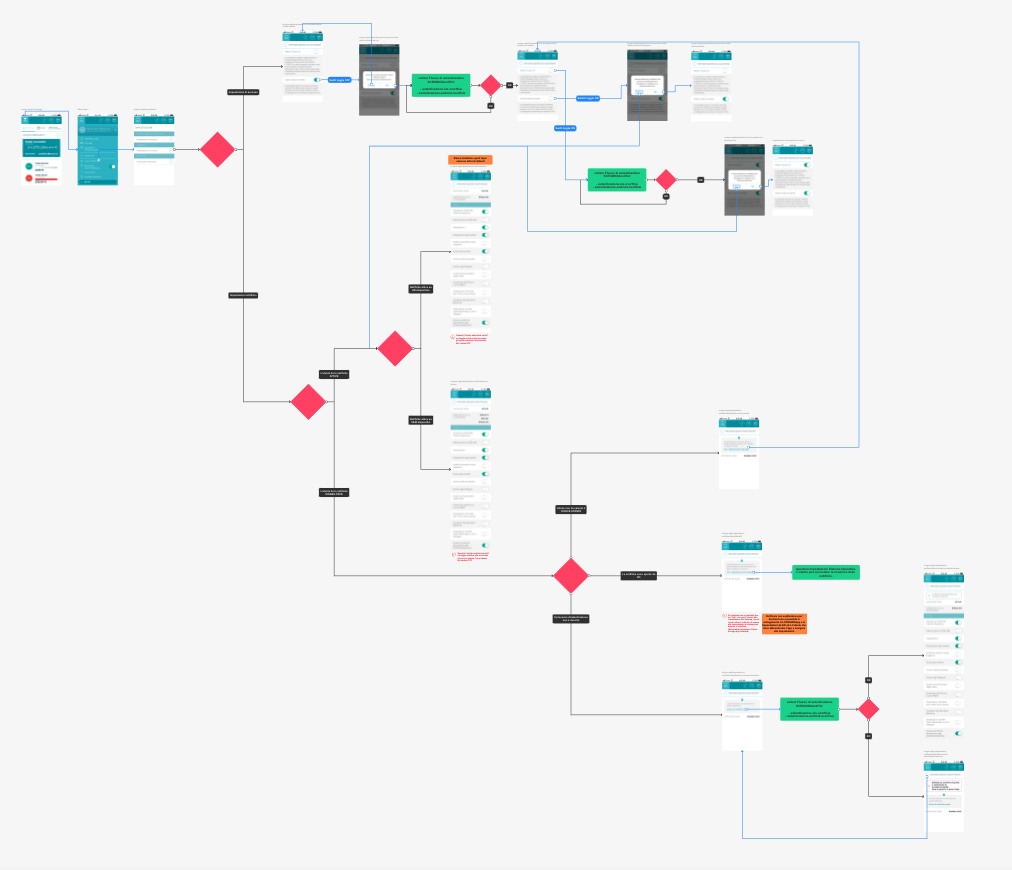
Conclusion
Although this project had a narrow scope, it gave me the opportunity to deepen my skills in UX flow design for iOS and Android systems. Working directly on end-to-end notification flows — rather than on individual screens — helped me understand how to design with both user experience and technical implementation in mind.
I also gained valuable insight into the logic and constraints of the banking sector, learning how sensitive contexts like finance demand a balance of usability, security, and compliance.
The final steps of the project were particularly important: refining flows and prototypes based on stakeholder feedback, validating cross-platform consistency, and confirming that business requirements were met. This closed the loop and consolidated all design decisions into a cohesive, ready-to-implement solution.
Overall, the project strengthened my confidence as a UX designer and gave me concrete experience in designing complex system flows within a structured, multidisciplinary environment.
MORE PROJECTS
Enterprise Solutions / B2B Platform / Complex Workflows
Corporate Intranet
Platform
Transforming a legacy internal tool into a scalable, task-oriented intranet for customer service operators.
View Case Study

SaaS SOLUTIONS / FROM COMPLEXITY TO CLARITY / SEAMLESS USER JOURNEYS
Whitelable E-commerce Ecosystem
End-to-end UX design of a custom enterprise platform — from business needs to tested product.
View Case Study

FINTECH / MOBILE APP / UX FLOWS
Push Notifications
for Mobile Banking app
Enhancing UX with a clear and scalable communication system.
Project overview
As part of the design and consulting team, I contributed to defining and designing the push notification system for a mobile banking app.
The goal was to enable the bank to manage notifications in a clear and scalable way, ensuring personalization, security, and multi-device control.
Although the project had a limited scope, it was strategically significant because it required balancing business, privacy, and user experience needs in a daily-use and highly sensitive context (money management).
About the project
Role:
UX Designer
Time:
Oct 2020 – Mar 2021
Team:
2 UX Designers, 3 Business Analysts, Dev Team
Cient:
Leading Italian Financial Institution (NDA)
Key challenges
→
Accurately identifying the user in a complex ecosystem (multi-device, multiple logins, shared accounts).
→
Maintaining cross-platform consistency (iOS and Android), aligning notification activation and management flows.
→
Managing diverse use cases (generic, sensitive, reporting, multichannel notifications).
→
Balancing security and simplicity: protecting personal data without creating friction for the user.
→
Collaborating with multidisciplinary teams (analysts, developers, bank stakeholders).
The Process
Analysis & Research → Definition & Strategy → Design → Validation & Delivery
PHASE 1
Analysis & Research
This phase focuses on understanding the problem space. It involves gathering business requirements, analyzing user needs, and mapping the current state to uncover opportunities and constraints.
The outcome is a clear foundation for design decisions.
Business requirements
We started with an in-depth requirements analysis, aligning the bank’s needs with user expectations.
→ Identification of different notification types (alerts, monitoring, reports, commercial communications)
→ Definition of business rules to manage sensitive vs. non-sensitive notifications
→ Exploration of system scalability: from single-device usage to multi-user, shared-device scenarios
Nomenclature and user states
Mapping user states (notifications enabled/disabled, registered, logged in, unregistered) was critical for designing flows.
I created a simplified visual model of the nomenclature, making state transitions clear to developers and stakeholders.
This work translated technical concepts into a readable UX model, reducing errors and ensuring cross-platform consistency.

Customer journey mapping
We developed detailed customer journeys for real-life scenarios:
→ first app access,
→ multi-device management,
→ shared devices (e.g., family tablet),
→ rejecting push notification activation,
→ social use cases (dinners, peer-to-peer payments).
These journeys helped anticipate complex cases and define the rules for activation, deactivation, and fallback notifications.
Stage
CUSTOMER
ACTIVITIES
Touchpoint
TIPO DI NOTIFICA
stato
notifiche
NOTIFICA
VERSO TERZI
COMPORTAMENTO
SISTEMA
TIPO DI NOTIFICA
NOTIFICA
ALL’UTENTE
stato
Apertura app
Domenico apre l’app
Attive su account
Domenico
Registrato
LOG in
Attive su account
Domenico
Domenico effettua
il log in
Registrato
Notifica a Domenico (login effettuato)
Controllo nuovo device?
NO
Attive su account
Domenico
Utilizzo
Registrato
Domenico controlla la lista dei movimenti
Attive su account
Domenico
Attive su account
Domenico
Utilizzo
Registrato
Chiusura app
Registrato
Domenico effetua un pagamento di prova verso Gianluca
Notifica a Domenico (pagamento effettuato)
Notifica a Gianluca (pagamento ricevuto)
Domenico chiude l’app














Primo Login
Scenario: Domenico ha da poco iniziato ad utiliizzare Jiffy sul suo cellulare.
Prova ad effettuare un pagamento verso il suo amico Gianluca.
Notifiche
Dettaglio notifiche non push
Stage
CUSTOMER
ACTIVITIES
Touchpoint
TIPO DI NOTIFICA
stato
notifiche
NOTIFICA
VERSO TERZI
COMPORTAMENTO
SISTEMA
TIPO DI NOTIFICA
NOTIFICA
ALL’UTENTE
stato
Apertura app
Luca apre l’app
Attive su account
Luca
Registrato
LOG in
LOG in
LOG in
SALVA USERNAME
LOG in
Attive generiche
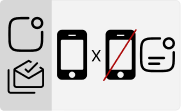
SALVA USERNAME
Attive generiche
Michele effettua
il log in
Attive su account
Luca
Attive generiche
Non registrato
Il sistema chiede a Michele se vuole salvare username, Michele rifiuta
Attive generiche
Notifica a Michele:
- login effettuato- nuovo device
Attive su account
Luca
Non registrato
Controllo nuovo device?
SI → Registra coppia Michele - Device
Luca effettua
il log in
Luca effettua login inserendo solo la pw avendo salvato l’utenza
Michele utilizza la funzione per cambiare utente al login
Non registrato
Il sistema chiede a Luca se vuole salvare username, Luca accetta
Registrato
Notifica a Luca (login effettuato)
Non registrato
Registrato
Controllo nuovo device?
NO
Notifica a Luca (login effettuato)
Controllo nuovo device?
NO
Il sistema deregistra
Luca
Attive su account
Luca
Utilizzo
Registrato
Luca invia soldi a Paolo
attraverso Jiffy
Attive su account
Luca
Attive generiche
LOG OUT
LOG OUT
Registrato
Non registrato
Luca effettua logout
Michele effettua
il logout


Attive generiche
Attive su account
Luca
Utilizzo

Non registrato
Chiusura app
Registrato
Michele effettua
il pagamento


Notifica a Michele (pagamento effettuato)
Notifica a Paolo (pagamento ricevuto)

Luca chiude l’app













Cena tra amici
Dopo una cena tra amici, Paolo (che si trova senza contante) si offre di anticipare il costo per la cena per poi ricevere dagli altri avventori denaro via Jiffy. Michele, utente Jiffy, ha il cellulare scarico e chiede a Luca, anche lui utente Jiffy, se può utilizzare il suo smartphone per inviare i soldi a Paolo.
Notifiche
Dettaglio notifiche non push
Notifica a Luca (pagamento effettuato)
Notifica a Luca
(login al device)
Notifica a Paolo (pagamento ricevuto)









PHASE 2
Definition & Strategy
Here the insights are translated into structure.
The team defines priorities, creates frameworks such as taxonomies or matrices, and aligns stakeholders on objectives and rules. This phase ensures a shared direction before moving into design.
Notification matrix
I contributed to defining a clear notification taxonomy by crossing type (alert, monitoring, report) with sensitivity (sensitive/non-sensitive).The outcome was a visual matrix of six key clusters, which guided both journey design and channel definition (push, in-app, email, SMS).This matrix became a valuable synthesis tool for both design and business stakeholders.
Type
Sensitivity
Example
Alert
Sensitive
Transaction alerts
Monitoring
Sensitive
Low balance alert
Report
Sensitive
Account activity report
Alert
Non sensitive
Account block reminder
Monitoring
Non sensitive
Stock price alert
Report
Non sensitive
Current account balances
Definition of main flows
I worked on outlining the core user flows that would structure the notification system, ensuring that every state and transition was clearly defined. This included activation and deactivation paths, login/logout scenarios, and the management of user preferences.
These flows provided a blueprint that supported both design consistency and technical feasibility across platforms.
Stakeholder and dev team alignment
A crucial part of this phase was maintaining alignment between business, design, and development teams. I facilitated discussions to translate business rules into user-centered flows, ensuring that stakeholders understood design implications and that developers had the clarity needed to implement the logic.
This step minimized risks of misinterpretation and created a shared vision across disciplines.
PHASE 3
Design
In this phase, ideas take shape through flows, wireframes, and prototypes. The focus is on creating user-centered solutions that are consistent across platforms and adaptable to different scenarios, always keeping feasibility in mind.
iOS and Android flow design
I designed the flows for:
→ notification activation and management (opt-in, username saving, permissions)
→ mapping user states (registered, unregistered, logged in, logged out)
→ multichannel management (push, in-app, email, SMS, PEC)
iOS Flow

Android Flow
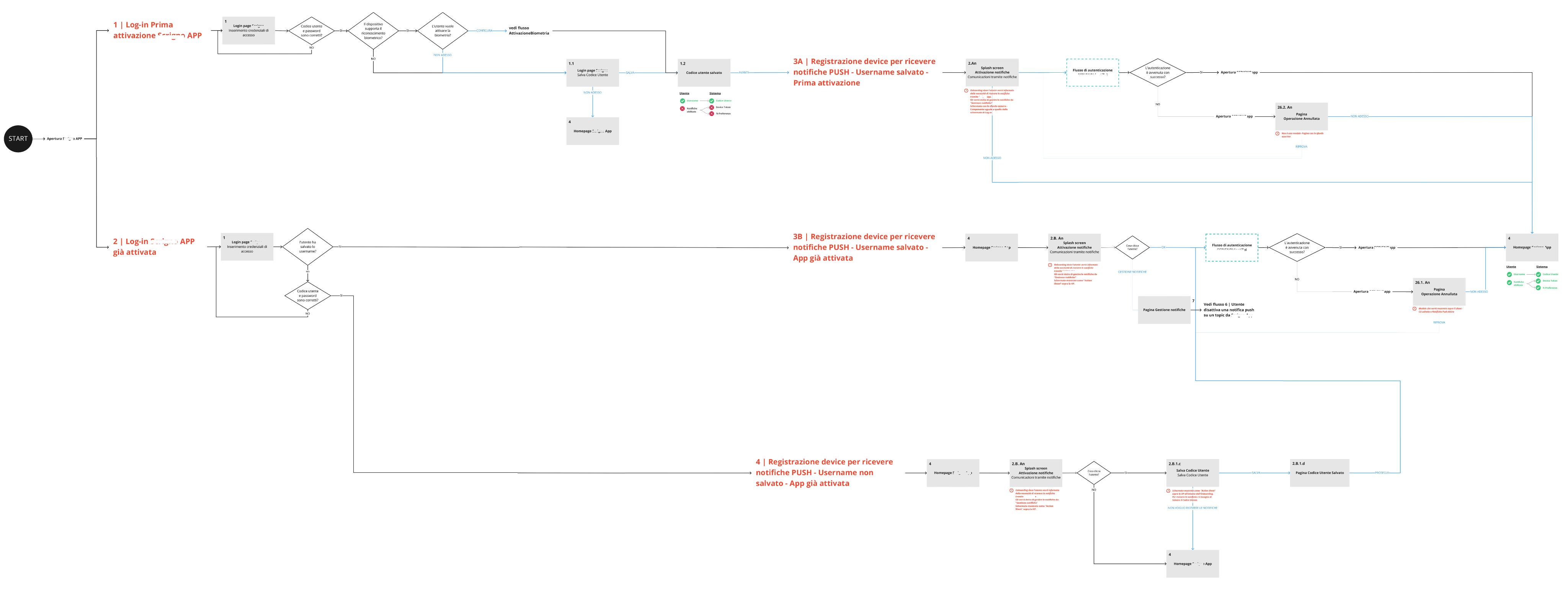
[Flows are shown here at reduced quality to illustrate the working method. Full-resolution versions will be available during portfolio presentations]
Multidevice scenarios
I designed scenarios for managing multiple devices linked to the same account:
→ Family tablet: two users sharing a device, with potential risks of receiving private notifications
→ Multi-device user: consistent notification management across smartphone, tablet, and laptop with different states
The visual representation of these scenarios made complexity tangible and enabled the design of clear, secure solutions.

High-fidelity prototyping
For this project, we moved directly to high-fidelity prototyping since the client already had a consolidated design system.I designed cross-platform prototypes for iOS and Android, which helped to:
→ ensure visual and behavioral consistency across OSs,
→ support validation with stakeholders and development teams,
→ clearly represent notification management flows and user preferences,




















PHASE 4
Validation & Delivery
The final phase ensures the design is validated and ready for implementation. It includes reviewing with stakeholders, iterating on feedback, and delivering clear assets and documentation to development teams
Alignment with the development team
In agreement with the client, we worked on Overflow to deliver complete user flows instead of isolated screens. This approach provided context and clarity for developers and simplified implementation. Since Overflow is also a collaboration tool, it enabled cross-team iteration: development, marketing, and business stakeholders could leave comments directly on the flows.
This allowed us to adapt quickly to feedback, review steps when necessary, and ensure that the entire system was mapped end-to-end, not just visualized screen by screen.


Conclusion
Although this project had a narrow scope, it gave me the opportunity to deepen my skills in UX flow design for iOS and Android systems. Working directly on end-to-end notification flows — rather than on individual screens — helped me understand how to design with both user experience and technical implementation in mind.
I also gained valuable insight into the logic and constraints of the banking sector, learning how sensitive contexts like finance demand a balance of usability, security, and compliance.
The final steps of the project were particularly important: refining flows and prototypes based on stakeholder feedback, validating cross-platform consistency, and confirming that business requirements were met. This closed the loop and consolidated all design decisions into a cohesive, ready-to-implement solution.
Overall, the project strengthened my confidence as a UX designer and gave me concrete experience in designing complex system flows within a structured, multidisciplinary environment.
MORE PROJECTS
Enterprise Solutions / B2B Platform / Complex
Workflows
Corporate Intranet
Platform
Transforming a legacy internal tool into a scalable, task-oriented intranet for customer service operators.
View Case Study

SaaS SOLUTIONS / FROM COMPLEXITY TO CLARITY / SEAMLESS
USER JOURNEYS
Whitelabel
E-commerce Ecosystem
End-to-end UX design of a custom enterprise platform — from business needs to tested product.
View Case Study

